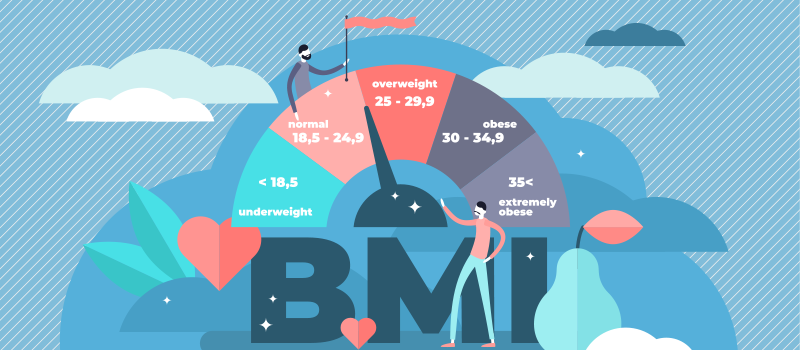What’s the Buzz
The Bee Healthy Blog
Why Do Exercise Needs Vary Between Individuals?

Participating in a regular exercise program is one of the best things you can do to improve your health. Physical activity is an important part of a healthy lifestyle and has tremendous benefits for people of all ages, genders, ethnicities, and fitness levels. But everyone’s exercise needs are not the same.
This article will talk about some of the reasons why exercise needs vary between individuals. It will also help you determine what kind of exercise routine you should follow for optimum physical fitness and good health.
Why do exercise needs vary for different people?
Fitness Goals
Exercise needs vary between individuals for several reasons, the main one being that not everyone has the same fitness goals. For example, one person’s goal may be to lose weight, and another person’s goal may be to run a marathon. While the former may require a combination of moderate aerobic activity and weight training, the latter will require more dedication toward building cardiovascular endurance and strengthening the large muscle groups of the legs that are used in long-distance running.
Current Fitness Levels
Different people have different exercise requirements because of variations in their current fitness levels. A person who is physically fit with good athletic ability may be able to perform more intense exercise and set higher personal goals compared to someone who is just starting with their fitness journey or someone who has had past injuries and needs to perform less intense exercise to avoid re-injury.
Other Factors
Besides personal goals and fitness, various personal factors such as age, weight, height, and health status also play a role in determining exercise needs. For instance, older individuals may want to perform less intense physical activities than younger people. Someone in good physical health may have less difficult goals than a less healthy person who needs more intense exercise to get healthy.
What are the benefits of an individualized exercise program?
The amount of exercise a person needs depends on various factors, as mentioned above. An individualized exercise plan can help each person achieve their fitness goals by addressing their unique exercise needs. Here are some good examples:
- A particular exercise may help a tennis player build shoulder strength and stability to take their game to the next level.
- A specific exercise may help someone who participates in extreme sports keep their judgment skills sharp.
- A cardiovascular endurance training program may help a long-distance runner optimize their cardiovascular system and maximum heart rate for peak performance.
- A young, single person with no responsibilities may have more time to work on their physical health compared to someone with less time on their hands.
- A customized exercise program may help a person with past injuries stay healthy without overtraining and putting them at risk of re-injury.
How to plan the ideal exercise regimen?
Here are some tips on developing the ideal exercise plan based on your goals and fitness levels:
- Determine your personal goals, such as weight loss, improved endurance, better balance, flexibility, or mental health benefits.
- Understand your current fitness level. Allow for adequate recovery times. Make sure you factor in both a warm-up and cool-down in your exercise routine to prevent injuries caused by overtraining.
- Choose exercises you enjoy and which will help you meet your goals. For instance, a combination of weight training and aerobic exercise like running, cycling, or swimming can burn calories and help you lose weight. Doing yoga stretches muscles and can help improve flexibility and balance. Plus, it has mental health benefits.
- Decide how much time to allocate to physical activity. Some exercise programs require more time commitment than others. For example, time spent performing strength training at a gym will be far more compared to a brisk walk near your home.
- Consider intensity and time of exercise. Intensity refers to how difficult the exercise is, and time refers to the duration. So, running at a speed of 6 miles/hour is more intense and will require less time to perform the exercise than brisk walking at a rate of 3 miles/hour.
How much exercise do I need?
The Centers for Disease Control and Prevention (CDC) recommends the following exercise routine for people of different age groups:
Young Children (3-5 years)
Active play and enjoyable activities throughout the day, every day.
Older Children and Teens (6-17 years)
At least 60 minutes of moderate to intense physical activity every day. The exercise program should include aerobic exercise (running, swimming, soccer) and strengthening exercises (jumping rope, gymnastics, climbing).
Adults (18-64 years)
At least 150 minutes of moderate physical activity every week (for instance, 30 minutes 5 days a week), including an activity that strengthens muscles on at least two days.
Older Individuals (65 years and older)
Same as the 18-64 years age group, and additionally, activities that promote better balance.
Adults with Disabilities or Chronic Health Conditions
The CDC recommends that such individuals engage in a combination of moderately intense aerobic exercise and muscle-strengthening exercises for all the major muscle groups. The goal is to be as active as possible if a person cannot perform physical activity at the same frequency as people without disabilities or chronic health conditions.
Wrapping Up
Physical activity is vital for good health and overall well-being. Exercise needs vary between individuals and depend on many different elements. A customized exercise plan can help you achieve your personal goals and fitness levels. The main thing to remember is that some exercise is better than no exercise. If you don’t have access to a personal trainer, talk to a healthcare provider about your planned workout, and once you have the go-ahead, start by making small steps and building from there.
References:












SOCIAL